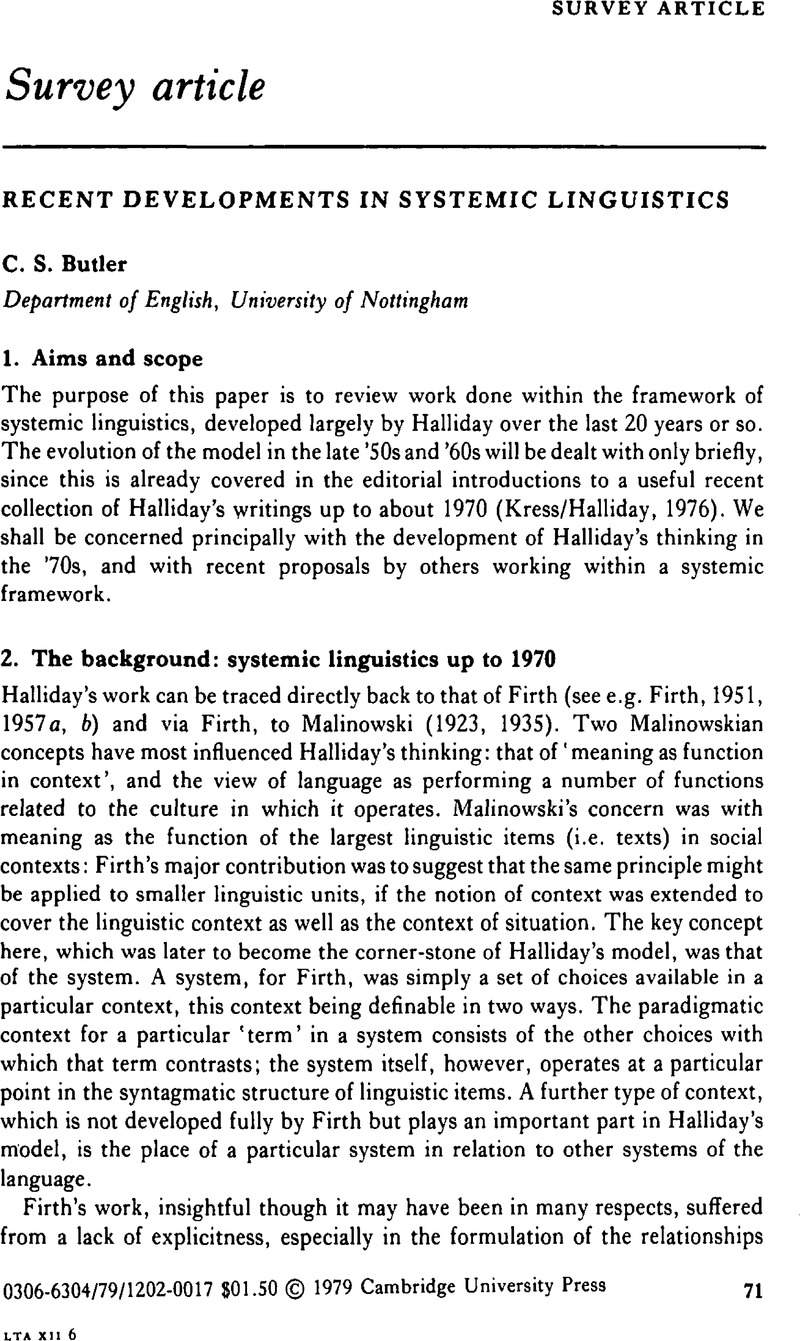Crossref Citations
This article has been cited by the following publications. This list is generated based on data provided by Crossref.
Gregory, Michael
1980.
James Monaghan. The Neo-Firthian Tradition and its Contribution to General Linguistics. Tubingen: Max Niemeyer Verlag, 1979. Pp. x + 223. DM 52.00..
Canadian Journal of Linguistics/Revue canadienne de linguistique,
Vol. 25,
Issue. 1,
p.
83.



